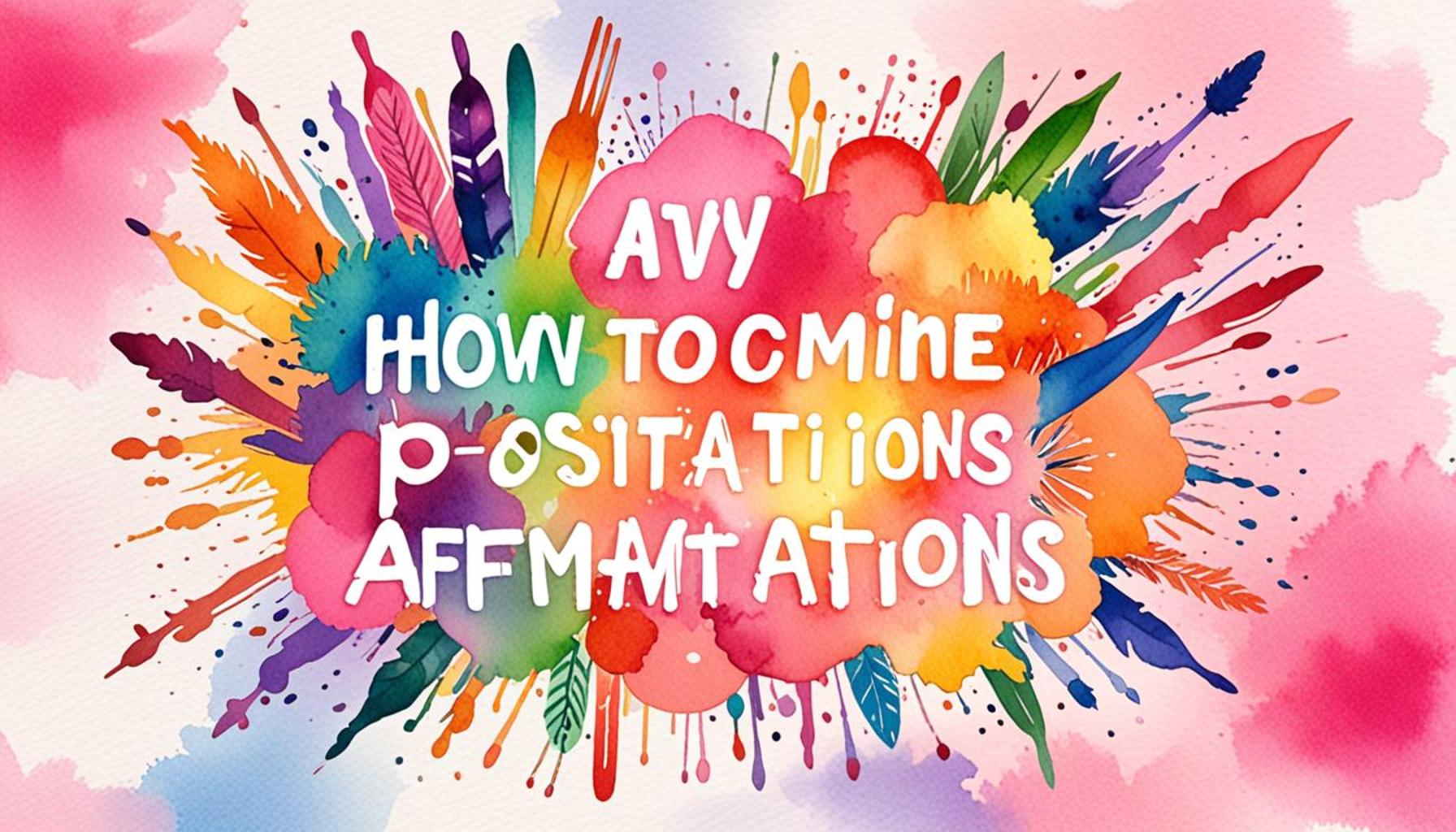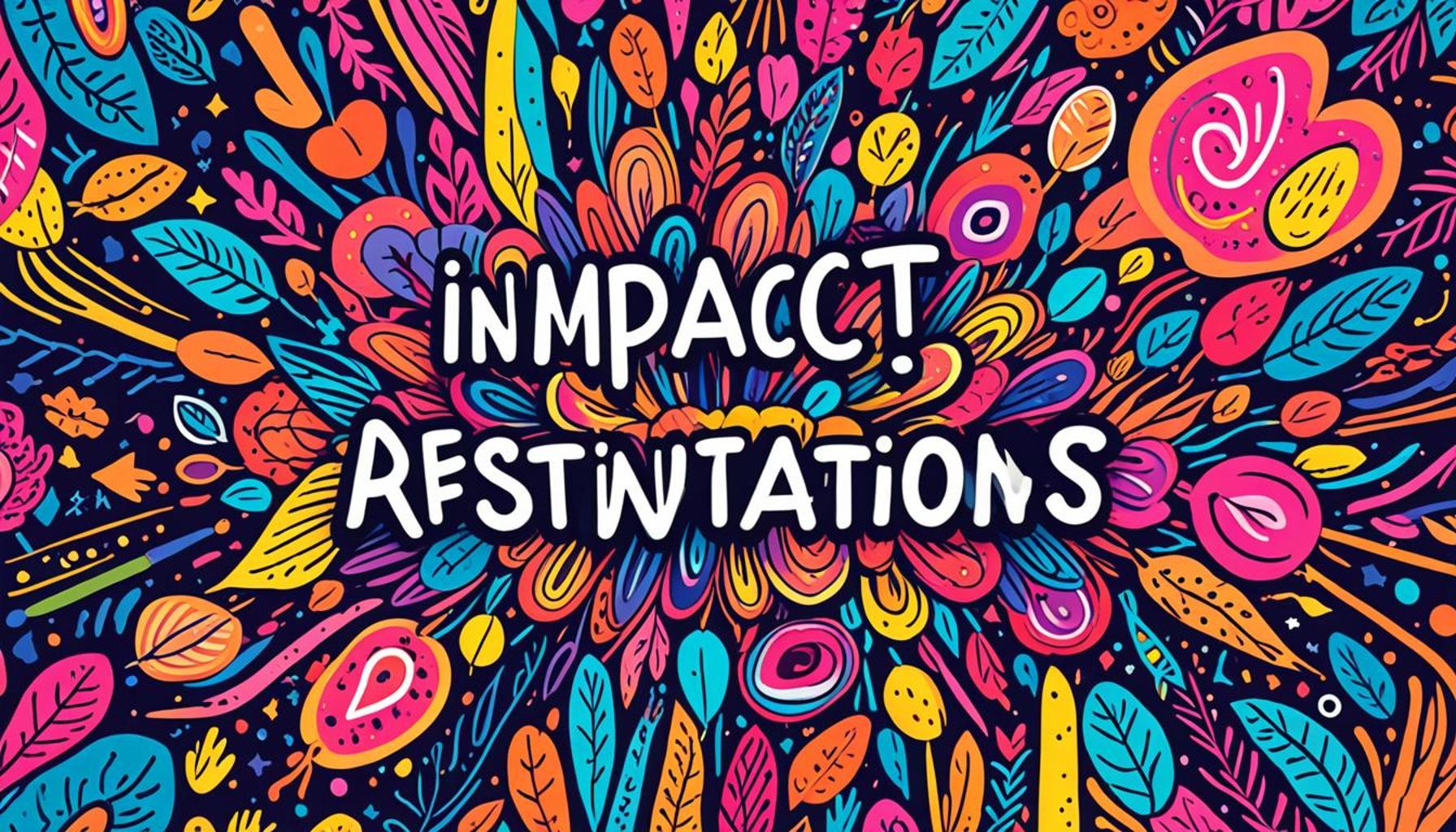Adapting Positive Affirmations to Achieve Personal Goals Effectively

Unlocking Your Potential
Positive affirmations have gained significant recognition in the world of personal development. They are powerful tools that can shape our mindset, influence our behavior, and ultimately help us achieve our aspirations. By incorporating tailored affirmations into your daily routine, you can align your thoughts with your personal goals.
The concept of utilizing affirmations is rooted in the idea that our internal dialogue shapes our reality. When we repeatedly affirm our capabilities and ambitions, we can break through mental barriers that hold us back. Understanding how to adapt these affirmations specifically for your goals is crucial for maximized impact.
Why It’s Relevant
- Personal growth: Tailored affirmations enhance self-belief.
- Goal achievement: Specificity in affirmations promotes focus.
- Resilience building: Positive statements can foster a strong mindset against setbacks.
In this article, we will explore the Top 5 strategies to effectively adapt positive affirmations to your personal goals. These insights will empower you to harness the full potential of your mindset and drive progress in your pursuits.
CHECK OUT: Click here to explore more
Adapting Positive Affirmations to Your Personal Goals
Affirmations, when used effectively, can be a powerful tool to transform your life and steer it towards the achievement of your goals. The practice of articulating positive affirmations can become vital on your personal journey, helping you maintain focus, boost confidence, and nurture a positive mindset. However, the key lies in knowing how to tailor these affirmations to align effectively with your aspirations. In this expanded guide, we examine five highly effective methods for integrating positive affirmations with your personal goals.

5. Reflect Deeply on Your Goals
The foundation for adapting positive affirmations begins with a thorough understanding of what you genuinely wish to achieve. This requires a profound reflection on your personal goals. Ask yourself probing questions like, “What do I truly want?” and “Why is this goal important to me?” By clearly identifying and articulating your goals, you can align your affirmations more precisely with these objectives.
- Define Clearly: Take the time to write down your goals in concrete terms, ensuring they are specific, measurable, and feasible.
- Visualize the Future: Imagine yourself in the future having achieved these goals. Picture the details vividly in your mind.
- Be Specific: The more detailed your goals are, the more direct your affirmations can be. Avoid vague language for clarity.
Reflection not only sets the stage for more personalized affirmations but also helps in eliminating any ambiguity. This clarity ensures that the affirmations you craft will be relevant and meaningful.
4. Create Affirmations Aligned with Your Values
Once you have a clear vision, the next step is to create affirmations that resonate with your core values. This alignment between values and affirmations significantly boosts motivation and authenticity. For instance, if honesty is a primary value for you, craft an affirmation that reflects this as you progress towards your goals.
- Identify Core Values: Compile a list of values that are most important to you. Consider how these values play into your goals.
- Craft Matching Affirmations: Design affirmations that embody these values. For example, “I value honesty as I achieve success.”
- Regular Reviews: As you evolve, your values may shift. Ensure your affirmations grow with you, reflecting any changes.
By aligning affirmations with your values, you foster a deeper sense of authenticity. This connection can fuel greater commitment and consistency on your path to achievement.
3. Use Present Tense Language
The language you use is critical in crafting effective affirmations. Utilizing the present tense rather than the future is a powerful technique that creates a feeling of immediacy and reality. Structure your affirmations as though you are already experiencing the achievement of your goals.
- Avoid Future Projections: Instead of saying “I will be,” say “I am,” or “I have.”
- Focus on Positivity: Frame your affirmations optimistically, steering clear of negative constructs.
- Enhance Belief: By envisioning your goals as current realities, your mind is more inclined to adapt to this new state.
Such a present-tense approach can rapidly alter your perceptions, enhancing your ability to manifest these goals in reality. This alignment between thought and language can accelerate your journey towards your aspirations.
2. Repeat Affirmations Daily
Repetition is an immensely powerful method for ingraining your affirmations into your subconscious. By making this practice a regular part of your routine—whether in the morning, before bed, or during quiet moments throughout the day—your affirmations begin to transform into deep-seated beliefs.
- Use a Journal: Write down your affirmations. The act of writing adds a physical dimension to your mental task.
- Set Visual Reminders: Place your affirmations in visible locations, such as mirrors, notebooks, or workspaces.
- Be Patient: Consistency is key. Over time, this repetition will cultivate belief and lead to persistent action.
Through the power of continual repetition, a profound ripple effect occurs. Your energy and mindset shift, opening pathways to actions that align with your deeper goals.
1. Visualize Success Alongside Affirmations
The most compelling method involves pairing the practice of visualization with affirmations, amplifying their effectiveness. As you declare your affirmations, simultaneously visualize the success and satisfaction of accomplishing your goals.
- Engage Your Imagination: Close your eyes, and immerse yourself in a mental image of achieving your goals.
- Experience the Emotion: Allow yourself to feel the emotions associated with success, such as joy and pride.
- Enhance Detail: The more sensory-rich your visualization, the more effective it becomes in reinforcing your affirmations.
By coupling vivid visualization with verbal affirmation, you create a multisensory experience that strengthens neural pathways associated with success. This integrated approach helps solidify your resolve, making the path to your aspirations feel more tangible and within reach.
In conclusion, integrating positive affirmations into your personal goal-setting routine involves more than just repeating encouraging phrases. It’s a conscientious process of reflection, alignment with values, language use, repetition, and visualization. By employing these methods, you forge a clearer path towards actualizing your personal ambitions, fostering an empowered mindset poised for achievement.
| Category | Details |
|---|---|
| Self-Confidence | By integrating positive affirmations, individuals can boost their self-esteem, leading to a more assertive approach in pursuing personal goals. |
| Mental Resilience | Affirming positive thoughts can enhance an individual’s ability to overcome challenges and setbacks, thus maintaining motivation towards achieving goals. |
| Focus and Clarity | Utilizing affirmations sharpens an individual’s clarity of purpose, which is essential in mapping out effective strategies to meet their personal aspirations. |
| Emotional Well-being | Engaging in consistent positive affirmations can significantly enhance emotional health, enabling better response mechanisms to stress and anxiety. |
Understanding how to adapt positive affirmations to your personal goals is not merely a practice for self-improvement but a powerful framework influencing various aspects of life. Each of these categories plays a critical role in shaping a resilient character that can tackle life’s challenges head-on. This balance of affirmations serves not just as a motivational tool but also as a foundation for comprehensive personal development, guiding each individual to pursue and achieve what they genuinely desire. Delving deeper into these aspects reveals their interconnectivity; for instance, a boost in self-confidence can be the catalyst for greater mental resilience, allowing individuals to face challenges with a stronger mindset. Furthermore, the clarity gained through affirmations leads directly to improved focus, ultimately paving the way for heightened emotional well-being. Consequently, integrating these positive teachings into daily practice becomes an invaluable asset for anyone looking to enhance their journey towards personal fulfillment.
RECOMMENDED: Check out this similar article
Frequently Asked Questions on Positive Affirmations Adapted to Personal Goals
How can positive affirmations effectively support personal goals?
Positive affirmations can be a powerful tool in achieving personal goals by helping to rewire your mindset. By consistently repeating statements that reflect your desired outcomes, such as “I am becoming more skilled in my profession,” you reinforce a positive self-image and increase your confidence. This psychological effect can motivate you to take concrete actions toward your goals.
What is the best way to create a personal positive affirmation?
Crafting effective affirmations requires aligning them with your specific objectives. Start by identifying your core goals and then formulating affirmations in the present tense, such as “I am achieving my fitness goals” or “I am managing my time effectively.” This approach helps your subconscious mind to perceive these statements as reality, driving you toward action.
How often should I repeat my affirmations?
The efficacy of affirmations often depends on repetition. It is advisable to repeat your affirmations daily, preferably in the morning or just before going to bed. This routine can help embed the affirmations into your subconscious mind, making them more effective over time. Try to consistently integrate this practice into your daily schedule for the best results.
Can affirmations replace practical actions toward goals?
While affirmations are valuable tools for mindset shifts, they are not substitutes for practical actions. To achieve goals, one must combine the power of positive affirmations with tangible efforts. This holistic approach ensures that while your mindset strengthens your resolve, practical actions move you closer to your objectives.
What if my affirmations are not working?
If you find your affirmations ineffective, consider revisiting their formulation or the frequency of repetition. It’s important to ensure they’re deeply resonant with your true desires and objectives. Additionally, try adding a layer of visualization by envisioning yourself accomplishing your goals. Combine these techniques for a more comprehensive strategy that enhances the affirmations’ effectiveness.
YOU MAY ALSO LIKE: Read this other article
Conclusion: Embracing Positive Affirmations
Adapting positive affirmations to align with personal goals is more than just a motivational tool; it is a well-documented strategy for fostering a growth-oriented mindset. Throughout this article, we explored how identifying specific goals, tailoring affirmations, and integrating them into daily routines can significantly impact one’s mental attitude and focus.
An important takeaway is the role of specificity in affirmations. By creating affirmations tailored to individual aspirations, individuals can cultivate a more personal and meaningful dialogue with themselves. This personalized approach ensures that affirmations are not just words, but a profound catalyst for change.
Moreover, affirmations are potent when combined with consistency. Incorporating them into daily habits ensures they become embedded in one’s conscious and subconscious mind, reinforcing positive beliefs and behaviors over time. Coupling affirmations with visualizations further amplifies their effectiveness, providing a vivid mental picture of success.
Another crucial factor is resilience. Positive affirmations should encourage perseverance and adaptability when facing setbacks. By internalizing affirmations that foster a resilient spirit, individuals enhance their ability to overcome challenges and remain steadfast in their pursuit of goals.
Ultimately, adapting positive affirmations to align with personal objectives can transform not just one’s mindset but also the trajectory of their ambitions. This strategic alignment between words and actions ensures that individuals are not only driven by hope but are also grounded in a proactive pursuit of growth. As we move forward, embracing this powerful tool can unlock untapped potential and lead us to a more fulfilling and accomplished life.


